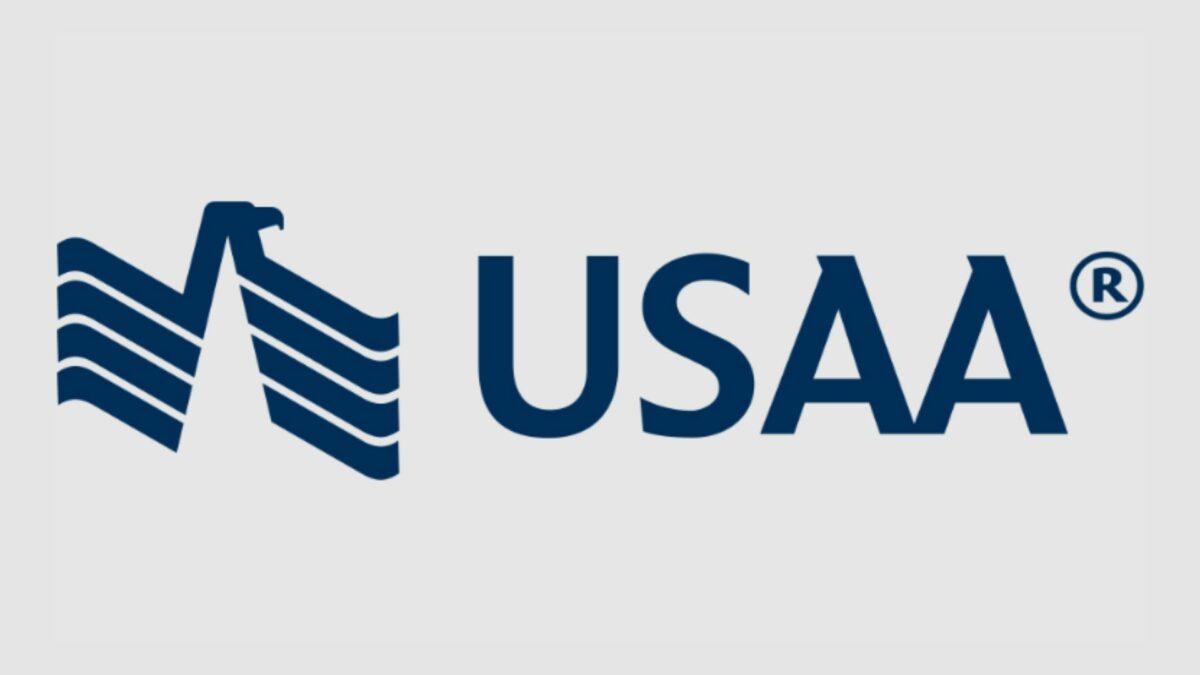“It is easier to forgive an enemy than to forgive a friend.”
–William Blake
This is part three of a three part series on USAA. You can read the first part here and the second part here.
Disclosure: USAA flew me to San Antonio for a three-day conference from November 6-8, 2013, put me up in a hotel room, and fed me all on their dime.
One more disclosure: I’d have written this anyway. I see too many people missing out on eligibility opportunities to not write about the topic. I’m a huge fan of USAA!
In the past two articles, I’ve pretty much done nothing but sing the praises of USAA. They’re a full-service financial company who can help eligible members from soup to nuts with all of the aspects of their lives dealing with money.
If they’re so great, why don’t I just wholeheartedly recommend anyone who’s eligible to turn everything over to them?
I’d love to do that. There’s no point in having someone pay me for information and service that they could get for free somewhere else.
However, there are a few areas where USAA falls short, and that’s what keeps me from telling anyone who’s either a member or eligible to hang up the phone with me and call USAA.
This isn’t to say that I don’t think that if you’re eligible that you shouldn’t use them, not at all. As I previously outlined, there are some great things about them.
But, nobody’s perfect, and neither is USAA.
What are the areas where I think USAA falls short?

Brokerage and investment management services
My biggest beef with USAA is with their brokerage services (which I use). They have a reasonable suite of mutual fund offerings, but their fees aren’t best-in-breed.
Fees matter.
Let’s compare the USAA S&P 500 index fund (USSPX) to the Vanguard S&P 500 index fund (VFINX). We’ll invest $10,000 in each fund on the inception date of USSPX, June 28, 1996 and see how they’ve done through November 14, 2013.
That’s a $801.79 difference, which might not seem bad, particularly over 17 years. However, let’s assume that you need $1.5 million in assets to retire at age 50 (how do you figure out how much you need to retire? Sign up for the myFinancialAnswers service and find out!). You would have 60% of your investments in stocks, and if you were using a S&P 500 index fund as your stock investment, that difference would amount to $19,939.14. You might have to work another year to make up the difference.
Plus, if you want to buy into VFINX from USAA, you’re going to have to pay a significant commission, which you don’t have to pay from Vanguard into VFINX or from USAA into USSPX.
Just in case I didn’t mention it before, fees matter, because they’re cumulative and we eventually deal with large numbers as we come close to achieving financial independence.
Furthermore, if you do decide to use USAA to manage your assets, their fees, while below the industry averages, are still too high. Assets under management fees will hamstring your portfolio, and you should only pay a flat fee if you’re going to have someone manage your money for you.
Also, their asset managers have incentives to get money into USAA funds. So, you’re going to be paying them AUM fees to get put into underperforming funds. That’s a double whammy.
Banking account limitations
I’m a heavy user of USAA’s banking products. However, they’re not perfect. There are a few items that continue to annoy me that I’d love to see changed.
- Limits on mobile deposits. I occasionally receive distribution checks from the company that I co-founded that are larger than the mobile deposit limit. Yes, I can go to a UPS store and deposit the check, but if I’m going to get out of the house to go to a bank, I’m going to go to an actual bank. Call me old-fashioned, but I don’t trust the UPS guy to not screw up a check with large numbers on it. I’d rather go to a bank. I’d actually rather just deposit it from home and get it taken care of, but that doesn’t happen.
- Limits on transfers in and out of the bank. Based on the previous deposit limit issue, I’m also forced to make multiple transfers to get the money that I deposited elsewhere into the USAA system.
- Can’t get cashier’s checks. Now, if I lived near a military installation where USAA had a branch, this wouldn’t be a problem. In fact, they have a great new feature where you can request a cashier’s check using your mobile app and then swing by the bank and print it out yourself without having to see an actual teller. But, I don’t live near one of their branches, so I can’t do that. As someone who purchases multiple rental properties per year, it’s an inconvenience and requires me to use another bank to complete my transactions.
I realize that the first two issues are primarily a result of their fraud detection and loss prevention policies, and they’re being conservative to make sure they don’t get swindled. The downside is balanced out by the immediate availability of the funds that I do transfer into USAA from another bank or from checks that I deposit using the mobile app. It still doesn’t make these other inconveniences go away.
One other concern that I have with USAA is their foreign exchange fees for both ATM withdrawals and credit card usage. They charge 1% on credit cards for foreign transactions and 1% for foreign ATM withdrawals. Since we like to travel internationally, these fees eat into our travel budget, forcing us to use other banks’ cards and accounts for accessing money.
Small business support

As I have stated before, one of the ways that you can achieve early financial independence is through entrepreneurship. It’s the path that we took, and veterans in particular have a strong entrepreneurial predisposition. Since USAA supports the military, their families, and veterans, it would seem logical that they’d have a robust small business and entrepreneurship program to help them out.
They don’t.
There is no business checking.
There is no solo 401k program.
There is no 401k administration program.
Setting up a SEP program is onerous. We did this with my last company, and we eventually abandoned it because it was more trouble than it was worth.
I don’t expect a lot out of a bank when it comes to small business support. Provide a checking account, a credit card, payroll support, and retirement plan administration, and don’t charge an arm and a leg to do it.
But, USAA falls short. If you’re an entrepreneur, you can’t look to USAA for support.
This is unfortunate. I’d love to have given them our business, but it wasn’t to be.
Rental property support
I have mixed feelings about this one. For the rental properties that I can and have insured with USAA, I’ve received the cheapest rates that I could find. They also have a pretty nifty maintenance calendar if you’re a DIY type.
Again, if you’re going to achieve early financial independence, then investing in rental properties is a good way to go. It’s what we’re using to achieve PIRE.
I have two issues with USAA’s support of our efforts to become Donald Trump sans combover:
- You can only insure 5 rental properties with USAA. If you’re going to become a serious rental property owner, you’re probably going to have more than five properties. For properties #6 and beyond, in Texas, I’ve used my buddy Ed Wise and have been exceptionally happy with the support he’s provided.
- They’re not great with renovation properties. The house that we purchased from Auction.com was gutted and in need of a serious makeover. When I called USAA, I informed them that it was a serious rehab project and would take probably three months to get into livable condition. They sent their underwriter a week later, and within 6 weeks, I had a cancellation notice because the property wasn’t livable. Ed Wise got that insurance contract.
- Updated July 30, 2015: Personal liability insurance limitations. We just got notification that we are losing our personal liability umbrella policy (PLUP) because we do not have all of our rental properties insured with USAA. Apparently, they will now insure up to 10 rental properties, but that won’t help us. Therefore, we have to go elsewhere for a PLUP.
Conclusion
The issues I’ve raised in this part of the series may seem like nitpicking, but if you’re serious about achieving early financial independence or you’re an entrepreneur (or both), they’re fatal flaws to using USAA as your true one-stop provider of all of your financial needs.
With that in mind, USAA should be in your suite of financial services and insurance providers if you are eligible. They’re our primary, go-to provider for insurance and banking, and we’ve been very happy with their support.
What has your experience with USAA been? Did I miss any shortcomings? Let’s talk about it in the comments below!
Related posts:
Author Profile
- John Davis is a nationally recognized expert on credit reporting, credit scoring, and identity theft. He has written four books about his expertise in the field and has been featured extensively in numerous media outlets such as The Wall Street Journal, The Washington Post, CNN, CBS News, CNBC, Fox Business, and many more. With over 20 years of experience helping consumers understand their credit and identity protection rights, John is passionate about empowering people to take control of their finances. He works with financial institutions to develop consumer-friendly policies that promote financial literacy and responsible borrowing habits.
Latest entries
 Low Income GrantsSeptember 25, 2023How to Get a Free Government Phone: A Step-by-Step Guide
Low Income GrantsSeptember 25, 2023How to Get a Free Government Phone: A Step-by-Step Guide Low Income GrantsSeptember 25, 2023Dental Charities That Help With Dental Costs
Low Income GrantsSeptember 25, 2023Dental Charities That Help With Dental Costs Low Income GrantsSeptember 25, 2023Low-Cost Hearing Aids for Seniors: A Comprehensive Guide
Low Income GrantsSeptember 25, 2023Low-Cost Hearing Aids for Seniors: A Comprehensive Guide Low Income GrantsSeptember 25, 2023Second Chance Apartments that Accept Evictions: A Comprehensive Guide
Low Income GrantsSeptember 25, 2023Second Chance Apartments that Accept Evictions: A Comprehensive Guide

